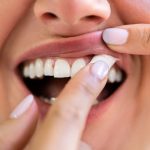
Depression during or after a pregnancy could be tied to a heightened risk for heart trouble in women decades later, new research warns. This so-called “perinatal” depression was linked to a 36% higher odds of developing heart disease within the next 20 years, reported a Swedish team led by Dr. Emma Bränn, of the Karolinska Institute in Stockholm. She said the findings could open up new pathways to protecting women’s hearts. “We know that perinatal depression is both preventable and treatable, and for many people it’s the first episode of depression they’ve ever experienced,” Bränn said. “Our findings provide more reason for ensuring maternal care is holistic, with equal attention on both physical and mental health.” The findings were published June 18 in the European Heart Journal. In the study, the Stockholm team looked at the medical histories of over 55,500 Swedish women who were diagnosed with perinatal depression between 2001 and 2014, and compared those to another group of almost 546,000 Swedish women who had also given birth during that time, but were not diagnosed with perinatal depression. They tracked the women’s heart health up until 2020. Any history of depression around the time of pregnancy was linked to higher odds for later heart disease. While 6.4% of women with such histories developed heart issues by 2020, that was true for just 3.7% of… read on > read on >


















